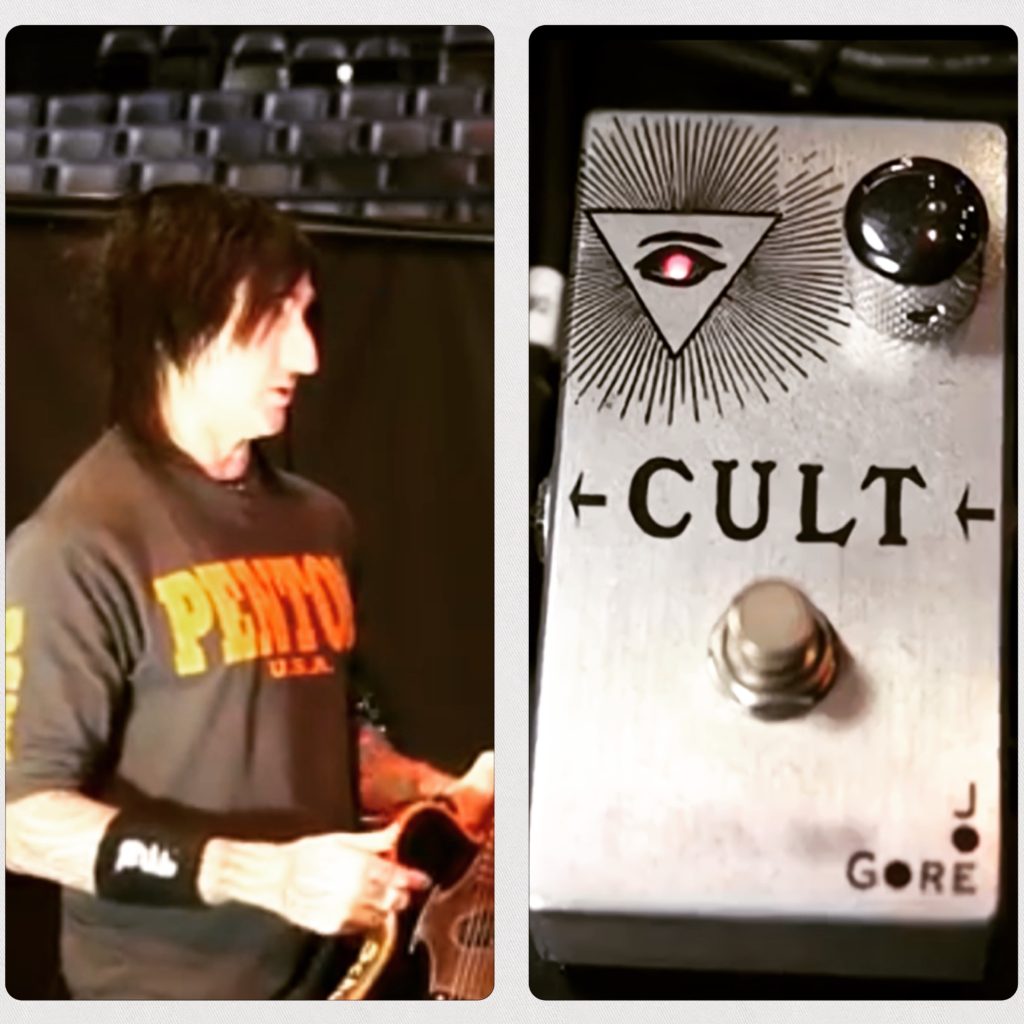
Woohoo! In this just posted Rig Rundown from Premier Guitar, Guns N’ Roses guitarist Richard Fortus shows off his fascinating stage rig, which happens to include my Cult pedal. It appears a 55:05. But gear geeks should watch the entire video, even if they’re not GNR fans. It’s full of interesting stuff—and lots of surprises.
Richard is the coolest. I’ve known him since the ’90s, when his then-band, Love Spit Love, played a show with PJ Harvey back when I was in the group. Besides being a great player, he’s the nicest guy ever, and he still has the enthusiasm of a kid discovering guitar for the first time. Plus, I’m jealous of how my PG pal John Bohlinger makes this sort of on-camera, impromptu interview look easy. (Trust me—it’s not.)
This part is especially flattering, and it’s not in the video: Like many primitive germanium effects, Cult doesn’t like buffers, so it should usually be used at or near the front of an effect chain. But of course, Richard performs using a buffered wireless system. He had someone build an “unbuffering” box that makes the pedal “see” pickup-style capacitance. I didn’t even know you could do that till Richard told me about it (though I’ve heard about other similar strategies since then).
Gotta say: It’s a special sort of thrill when something you concocted on a filthy little workbench winds up in the hands of a fine musician. Thanks, Richard and John!








I guess that “unbuffering” idea comes from Jack Orman. He has a cool article on “pickup simulator” circuit on his web page for quite some time.
https://www.muzique.com/lab/pickups.htm
You might be right, Nikola. I’ve seen that article around for years, but I’ve never tried it. And I didn’t think of it when Richard told me what his tech was doing. But I’m certainly going to revisit it now! Thanks. 🙂
I recently picked up one of your Duh pedals and Iv’e got to say its’ fantastic.
Love the way you just plug in and play and adjust to taste. I’m not surprised
more and more people are using your stuff, it really is great. Mad scientist indeed 🙂
Hey, Martin! Thanks for buying my pedal! Duh was a total surprise to me. I started out wanting to make a mad scientist fuzz with a zillion knobs, but wound up with a one-knob gizmo. (Though my Filth fuzz is a bit wackier.) I’m delighted to hear that you dig it. Take care! 🙂
Actually a simple resistor in series with the input of most fuzz face like circuits will allow them to operate more normally when driven from the output of another effect. Most effects pedal circuits have a fairly low impedance output and the resistor in series (around a 68K) presents a close enough simulation of the output impedance of a typical electric guitar. Although much of the interactivity with the guitar electronics is of course lost when another effect is placed in front of a fuzz face.
Some effects hackers have even suggested the use of a variable resistor in series with the input of the fuzz face circuit.
Remember that to simulate all of the electric guitar circuitry you need to use the circuit shown in the update to that linked article, which includes volume and tone controls and even some instrument cable capacitance. As the volume control on an electric guitar is wound down the inductance and capacitance of the pickup are increasingly isolated from the output jack. With the volume control wiper at equal resistance to each end (actually around 7 on most guitar knobs) then the output impedance is mostly resistive and for a 250K pot it’s effectively two 125K resistors in parallel.
When I wrote this years ago, I found that the Schottkys gave the best results by far. It wasn’t a comprehensive search, but I certainly tested germanium, silicon, and LED options. It wasn’t like swapping out diodes in a battery-powered distortion circuit, where almost everything works to some degree. In this passive application, the Schottkys were the loudest, and they produced the closest thing to a usable distortion-pedal sound. These observation are strictly empirical though — I don’t understand the electronics anywhere near to the degree Terry does. 🙂